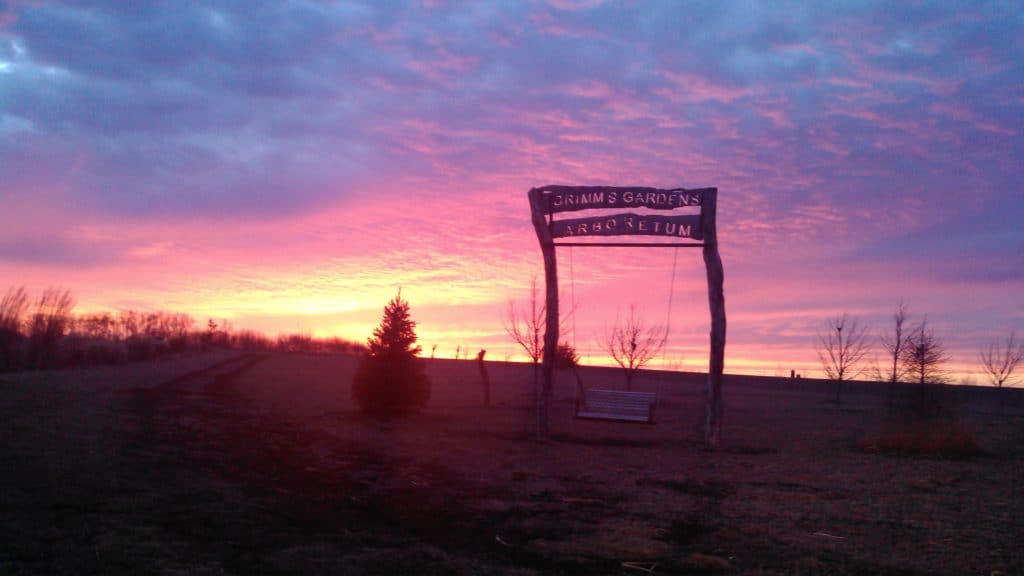Webster’s New Collegiate Dictionary defines an arboretum as a place where trees, shrubs and other plants are cultivated for scientific and educational purposes.
Grimm’s Gardens arboretum consists of approximately thirty acres of former row-crop ground. In 1985, the first of this ground was taken out of crop production and seedling trees of hackberry, red cedar, Austrian pines, and autumn olives were planted to form a shelter belt. Then, ten years later, more shelter belts were added. In some of these, burr oaks, red oaks, white oaks and scarlet oaks were planted for large deciduous trees. This was the beginning.
Early on it was easy to see that seed-grown trees of different species planted in very similar soil grew differently – some fast, others not so fast; some developed acorns and seeds at a young age, some many years later. A few trees developed great fall color, some held their leaves into the winter and others did not. We decided to start planting a tree test plot which has grown to include many shrubs, roses, grasses and perennials.
Since the early years of this arboretum, we have planted extensive plantings of oaks, maples and elms. We also have smaller plantings of lindens, gingkos, locusts, hackberries, zelkovas, crabapples, cherries, poplars, beech, birch, catalpas, dogwoods, Kentucky coffee trees, ash, walnuts, yellowwoods, golden raintrees, mulberry, flowering pears, sycamores, tulip trees, magnolias, willows, and bald cypress, cork tree, rubber tree, larch, fir, spruce, pines and arborvitae.
All of our plantings are watered well when planted in the fall. Any additional watering is only done the following summer if it is extremely dry. Some years we have not had adequate time or resources to get this accomplished and have lost some trees due to drought stress during the first year of establishment.
This has proven to be one of the earlier benefits of our arboretum, as we have been able to determine that the Acer platanoides ‘Royal Red’ all survived through their first summer of establishment, whereas the more commonly used ‘Crimson King’ cultivar, planted the same time, under the same conditions, and from the same bare root source, all died. This is just one of the many things we learn in an arboretum.
We are currently using GPS mapping as a way to track all of our trees. It is our purpose in developing this arboretum to have an educational place to learn how trees grow and which trees grow best in our climate; and that it can also be used as a park for people and their pets to exercise and enjoy the beauty of nature. We invite you out to view the arboretum for yourself!
We live in a very fast-paced society today with little time and very few places to truly be able to get away and unwind from the noise of the interstate or the busy highways. Our setting in the country is truly a country farm. We hope you can take time to come relax, unwind, and enjoy—and maybe even learn a little about trees – for “Life is a shade better under a tree”.



